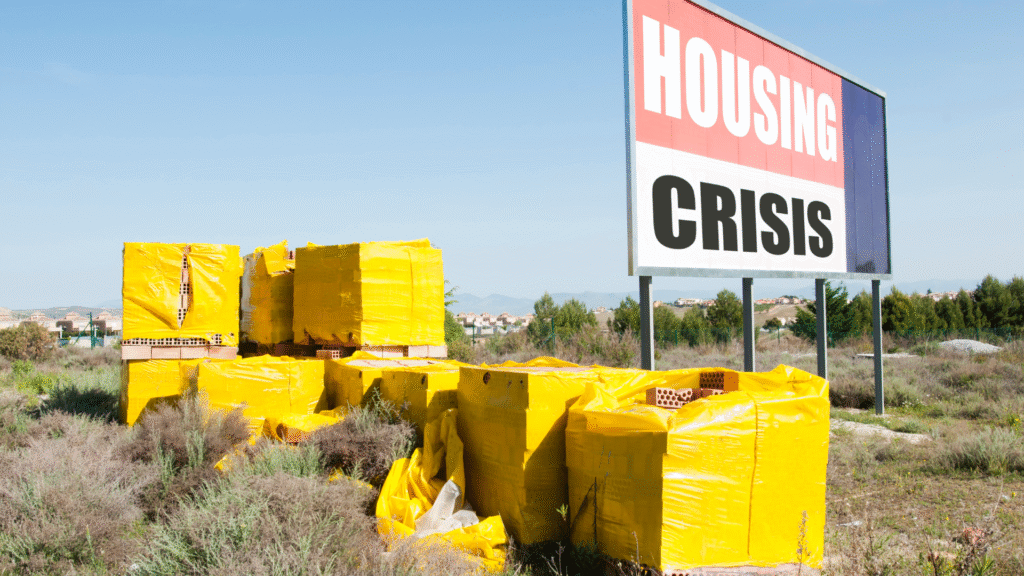America is facing a housing crisis we simply can’t ignore.
For years, the U.S. housing market has struggled with a major supply issue—and it’s only getting worse. The cost to build has gone up, interest rates have climbed, and investor appetite has cooled off. That means fewer housing developments are getting built, especially the ones average Americans can actually afford.
In today’s article, I’ll explain what’s really going on, why it matters, and how you can turn this challenge into long-term gains through passive investing in multifamily real estate.

A Housing Shortage That’s Not Going Away
Right now, America is short somewhere between 3 and 7 million homes, depending on which report you look at—from the Census Bureau to outlets like Axios. And there’s no sign that this shortage is shrinking.
Here’s why:
Most new construction is luxury: Developers are mainly building Class A and A+ properties. That’s high-end, luxury housing—not the type that solves the affordable housing problem.
It’s nearly impossible to build affordably: With high construction costs, rising interest rates on development loans, and labor shortages, building homes that the average person can afford just doesn’t pencil out.
Homeownership is out of reach: In every one of the 50 largest metro areas in the U.S., it’s now cheaper to rent than to buy. And in 21 of those cities, owning a home costs at least 50% more than renting.
So what happens when more people can’t afford to buy? They rent. And that’s where multifamily real estate comes in.
The Demand for Rentals Is Surging
This shift toward renting has created enormous pressure on the rental market—especially for quality, affordable apartments. Take Norcross, Georgia (one of the markets we’re investing in) as an example:
- There is zero new housing construction in the pipeline
- The population is growing, adding more renters to the mix
And this trend isn’t isolated. According to CoStar and CBRE:
- Q3 2024 saw the second-highest net absorption of multifamily units since tracking began in 1985
- In 2024, full-year absorption reached 557,000 units, a 70% increase over the prior year
Absorption refers to how many rental units are leased and taken off the market, this is the metric we refer to when we say “demand. ” This data shows that demand is outpacing supply in a big way.
What This Means for Multifamily Investors
What does all this mean to you as a passive real estate investor? If you’re investing in apartments or interested in investing in them, it means 3 things:
- High demand + low supply = strong returns.
More people are renting, and there aren’t enough units to go around. This drives up occupancy and rents in the right markets.
- Stable long-term fundamentals
With consistent demand expected over the next several years, multifamily investments are less vulnerable to market swings. You’re not depending on the stock market or timing the real estate cycle—you’re investing a real asset with real demand.
- An opportunity to do good while earning well
When you invest in value-add multifamily projects that improve affordable housing options, you’re helping meet a real need—and creating returns for yourself at the same time.
How to Take Advantage of This Opportunity
You don’t have to be a landlord or know how to renovate a building to get involved. That’s where syndications come in.
A syndication is simply a partnership where multiple investors pool their money to purchase and manage a larger property—like an apartment complex.
As a passive investor in a multifamily syndication:
- You don’t deal with tenants or repairs
- You receive quarterly cash flow from rental income
- And you share in the profit when the property is sold
It’s a proven strategy that allows you to build wealth without trading more time or energy.
Final Thoughts
The U.S. housing shortage is a real and growing problem. While that’s a serious challenge for many families, it also opens the door for investors who understand the economics of supply and demand.
By investing in multifamily syndications—especially in markets where housing is needed most—you can earn strong, steady returns while helping solve part of the problem.
If you’d like to learn more about investing with us, head over to nighthawkequity.com/intro and book a call with us. Whether you’re actively looking for opportunities or just have a few questions, that’s a great way to get started.
If you’re not quite ready to invest yet, that’s okay too. Just go to nighthawkequity.com and scroll down a bit—you’ll see a free mini-course that walks you through what it means to invest passively in a real estate syndication.
To your success,
Michael Blank

